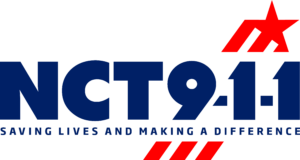I wrote an article very early in my tenure at NCT9-1-1 with this same title. I was trying to demonstrate that 9-1-1 was making great strides in using technology to improve services. Painting a picture that we were used to using our feet to drive our cars but were excited about the changes to flying spaceships was indicative of what those early changes felt like.
In 2003, digital mapping was introduced in the North Central Texas 9-1-1 region. For years, I had colored pencils in my desk and would use any spare time to color paper maps for the PSAP walls. Now we had maps that showed up on the telecommunicators’ workstations so they could see the growing wireless calls populate (approximately) on the map as well as the fixed structures associated with physical addressing. The maps weren’t used much then. Now about 90% of our call volume region wide is wireless, and we could not be effective without the digital mapping.
While national organizations have been talking about Next Generation 9-1-1 since 2001, NCT9-1-1 began our journey to NG9-1-1 in 2007 with NG planning. Shortly after in 2008, we implemented our first ESInet and IP-capable Call Handling Equipment (CHE) as our first step of many in our NG transition plan. It was the transition from over 40 stand-alone 9-1-1 systems to one comprehensive regional 9-1-1 system that connected all those PSAPs. It was a big first step, but only the beginning of a phased approach based on available funding and technology. We were on our way!
2013 text-to-9-1-1 was implemented in the North Central Texas region. We were the first to introduce this service in Texas and the fifth in the nation. We were actually asked to implement in 2012 by a wireless carrier. Although we had the technology researched and in place by this time, it was vital to us to ensure we had a public education plan, a telecommunicator training plan, and Standard Operating Procedures (SOPs) as well. We wanted the big picture addressed prior to implementation so we waited for the operational elements and developed these standards and plans with feedback from our telecommunicators and supervisors as well as counterparts throughout the nation. They became a model that many people around the country later adopted. The motto was “9-1-1: Call when you can and text when you can’t.”
There were some frustrating years when Dominos could find you but 9-1-1 could not. With the high wireless call volume, precise location was key to positive outcomes with response. However, our location technology was providing only approximate locations. In other words, our best was not enough. In 2018, North Central Texas 9-1-1 was one of the first to get device-based supplemental location, which is much more accurate than the previous method of network triangulation. It was such a victory to have better location to help save lives!
In 2019, Texas reclassified telecommunicators as first responders through HB 1090. There was a time when 9-1-1 dispatchers and call takers were considered receptionists, but those days are long gone. With all the new technology and tools and the stress that goes along with being the first contact in the worst day of someone’s life and coordinating life-saving responses while keeping our field responders safe has elevated the position of telecommunicator to first responder – well deserved!
There have been far too many technological advancements in NCT9-1-1 for me to list in this article, all of which have been baby steps in our journey to have the best 9-1-1 system available. This is a journey without a destination, but instead a commitment to continued improvement and constant change. We might be the Jetsons today with our current technology, compared to what we had 30 years ago. But who knows what tomorrow will hold? We will continue to go where no man has gone before as we forge the future of 9-1-1.

